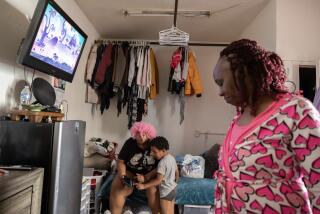New Life at Former Asylums
DANVERS, Mass. — In real estate, not even spooky trumps location.
Across the nation, former state hospitals for the mentally ill -- with dated names like “lunatic asylum” -- are being converted into homes.
Even the ominous Danvers State Hospital, once described as “the scariest building in the world” and a favorite destination of ghost-hunting thrill-seekers, soon will be home to laptop-toting latte drinkers.
“There’s obviously a lot of notoriety associated with the site,” said Scott Dale, a vice president at AvalonBay Communities Inc., which is constructing 497 luxury apartments and condominiums. “We think at the end of the day, that will be helpful.”
No units are on the market yet, but Dale was confident that occupancy wouldn’t be hurt by the property’s past, including a cemetery with some unmarked graves -- one reminder of the sad history of treatment of the mentally ill.
The formula has been successful elsewhere.
Six hundred would-be buyers signed up for the first 60 homes built in a $500-million project at the site of the former Dammasch State Hospital in Wilsonville, Ore., 20 miles south of Portland, city officials said.
In Traverse City, Mich., developers of a former asylum overlooking Lake Michigan have down payments in hand from buyers looking for condos, and a waiting list should those buyers bow out.
Rents at the 500-unit Octagon, the former New York City Lunatic Asylum on Manhattan’s Roosevelt Island, are 10% higher than expected, developer Bruce Becker said. Studio apartments in the $170-million development start at $1,700.
“It certainly still has a slight mystery to it, but I wouldn’t say scary or haunted,” said Rebecca Shaw, who is moving with her boyfriend into a one-bedroom unit at the Octagon next month.
Built in 1841, the asylum later became a hospital, which closed in 1955. Trailblazing journalist Nellie Bly spent time undercover at the asylum and wrote in 1887 that it was a “human rat trap.”
Shaw, who grew up on Roosevelt Island, recalled bicycling and roller-skating on the grounds.
“At that time it was weeds and bushes, overgrown plant life, which made it really cool,” the 30-year-old social worker said. “For kids, that was part of the appeal, it was scary and spooky. When you get older you decipher what’s real and what isn’t.”
What’s real: parking space and a short commute.
“For my work, I need to be close to the city,” Shaw said. “And the price is right for this point in my life.”
The housing boom has led developers to former mills, old schoolhouses and now state hospitals.
The mentally ill in the past were thought to benefit from bucolic settings. The Danvers facility, opened in 1878 as the State Lunatic Hospital, is atop a large hill overlooking the North Shore, and its 75 acres featured paths and working farms.
Eventually, many facilities closed and were left vacant as treatment moved away from overcrowded institutions in favor of smaller group homes.
Dale, the developer at Danvers, said AvalonBay was creating a “campus-like environment” with a swimming pool, Wi-Fi cafe and fitness center. Rents will start around $1,400 for a one-bedroom unit, and about $500,000 to purchase a condo.
Toby Fisher, executive director of the Massachusetts chapter of the National Alliance on Mental Illness, said he was glad to see Danvers go.
“The buildings are a little on the dreary side to say the least,” he said. “Thank goodness there are better forms of treatment.”
Still, developers can be sensitive. Websites for the projects in New York, Oregon and Michigan make little or no mention of their properties’ past use as asylums.
The Oregon project, named the Villebois to emulate the feel of European villages, will have townhouses starting at around $250,000. And just as a dose of precaution, developers called in help before work started.
“They had a psychic friend of theirs go through it and bless the spirits they thought were still hanging around,” Wilsonville Mayor Charlotte Lehan said.
More to Read
Sign up for Essential California
The most important California stories and recommendations in your inbox every morning.
You may occasionally receive promotional content from the Los Angeles Times.










